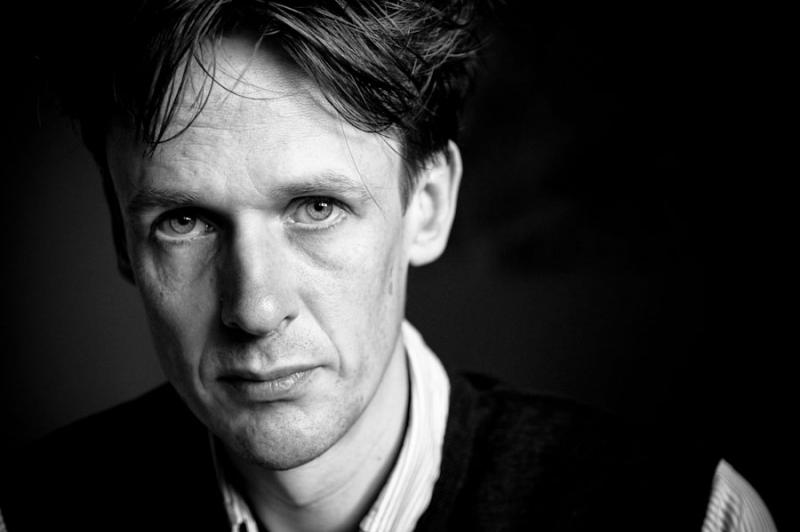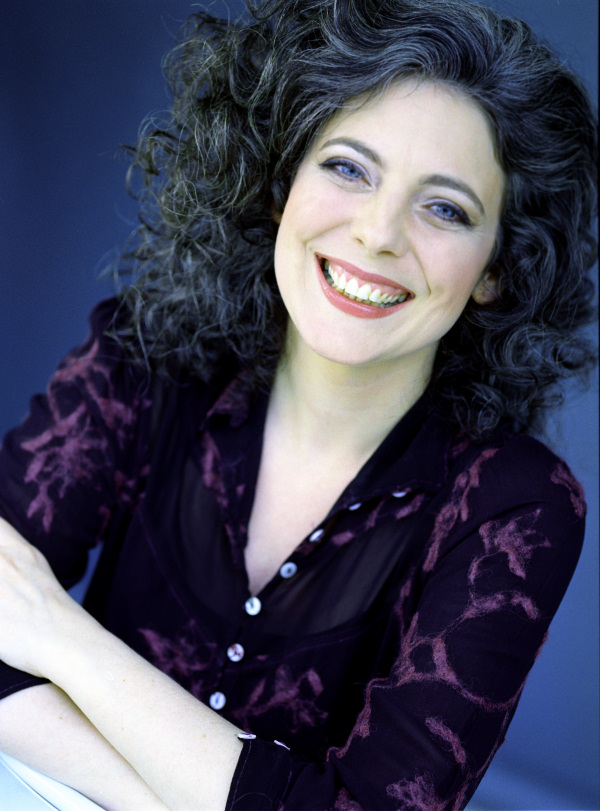The Bostridge Project: Ancient and Modern, Wigmore Hall | reviews, news & interviews
The Bostridge Project: Ancient and Modern, Wigmore Hall
The Bostridge Project: Ancient and Modern, Wigmore Hall
An evening of English song doesn't quite live up to the promise of its programming

The poster boy for a generation of thinking, reading, researching soloists, tenor Ian Bostridge is a regular recitalist. But the programmes he has curated for the current Bostridge Project at the Wigmore Hall have given him the opportunity to show that there’s a lot more to his skills than just performance.
On paper this central concert – a programme yoking the Elizabethan lute songs of John Dowland to songs from England’s second musical renaissance – was a gem. Unfortunately in practice what should have been an generous excess of music and performers proved uneven and more than a little over-weighted. Illness robbed the programme of mezzo Madeleine Shaw, so madrigal arrangements became three-part affairs, shared among Bostridge, soprano Sophie Daneman and baritone Mark Stone – soloists who never quite became a true vocal consort.
Bostridge took us to a place of emotive discomfort
Both balance and textural clarity were a problem, with few if any words travelling the length of the Wigmore. Given the wit and entendre of some of this material (Dowland’s Come again, sweet love being the classic example) it was a shame to lose the text, an absence we felt if anything more keenly in the composer’s more reflective, narrative numbers such as White as Lilies where storytelling is everything.
 While lutenist Elizabeth Kenny provided characteristically deft support for both vocal solos and ensembles, she was thwarted by the capricious acoustic of the Wigmore dome. Only in her own solos – music for lute also by Dowland – were we able to appreciate the astringent beauty of her tone and catch a glimpse of the dances so deeply sublimated within this music.
While lutenist Elizabeth Kenny provided characteristically deft support for both vocal solos and ensembles, she was thwarted by the capricious acoustic of the Wigmore dome. Only in her own solos – music for lute also by Dowland – were we able to appreciate the astringent beauty of her tone and catch a glimpse of the dances so deeply sublimated within this music.
Pairing Dowland’s music with Peter Warlock’s faithful arrangements of Elizabethan songs for string quartet and voice was a juxtaposition as pleasing aurally as historically. Sadly the Heath Quartet (here required to do their best impression of a viol consort) seemed ill at ease in their accompanying role, generating some uneasy power struggles with the singers. Stone suffered particularly, and My little Sweet Darling became a cradle song that rocked in all the wrong ways, while the syncopated cross-rhythms of the cycle’s latter songs seemed forever in danger of spinning out of control.
While the Elizabethan miniatures (both original and in arrangement) rely on expressive precision, the songs of Warlock and Gurney (accompanied by Julius Drake) offered the singers rather more freedom. Bostridge took us back to the music of his very first disk with the impeccable poise of Rest, Sweet Nymphs, lending this slight song a genius it barely deserves, while Daneman’s (pictured above) Cradle Song caught both the edgier suggestions of Warlock’s setting and its tenderness.
 Gurney settings fared respectably enough, though it was with the arrival of Nicholas Daniel’s (pictured left) cor anglais for Warlock’s cycle-in-miniature The Curlew that an evening of fragments truly gained coherence. Bostridge’s bladed tenor finds a natural echo in Warlock’s unsettled harmonies, both rejecting the pastoral comforts encoded into so much English 20th century music. Here, set off against the onyx glints of the cor anglais and the Heath Quartet’s resolutely untamed musical landscape, Bostridge took us to a place of emotive discomfort, a reminder of the nostalgia and denial as well as the national pride that fuelled England’s Elizabethan musical revival.
Gurney settings fared respectably enough, though it was with the arrival of Nicholas Daniel’s (pictured left) cor anglais for Warlock’s cycle-in-miniature The Curlew that an evening of fragments truly gained coherence. Bostridge’s bladed tenor finds a natural echo in Warlock’s unsettled harmonies, both rejecting the pastoral comforts encoded into so much English 20th century music. Here, set off against the onyx glints of the cor anglais and the Heath Quartet’s resolutely untamed musical landscape, Bostridge took us to a place of emotive discomfort, a reminder of the nostalgia and denial as well as the national pride that fuelled England’s Elizabethan musical revival.
While shoppers shoved and traffic aggressed outside in Bond Street, the Wigmore’s not-too-novelty festive programming offered a serious alternative to more overtly Christmassy fare. If the evening didn’t quite live up to the shiny promise of its packaging however, it was perhaps an issue over-abundance rather than stinginess. When the season returns for its final outing in February I’ll be back as well, hoping on that occasion for just a little less music performed with just a little more care.
Explore topics
Share this article
Add comment
The future of Arts Journalism
You can stop theartsdesk.com closing!
We urgently need financing to survive. Our fundraising drive has thus far raised £49,000 but we need to reach £100,000 or we will be forced to close. Please contribute here: https://gofund.me/c3f6033d
And if you can forward this information to anyone who might assist, we’d be grateful.

Subscribe to theartsdesk.com
Thank you for continuing to read our work on theartsdesk.com. For unlimited access to every article in its entirety, including our archive of more than 15,000 pieces, we're asking for £5 per month or £40 per year. We feel it's a very good deal, and hope you do too.
To take a subscription now simply click here.
And if you're looking for that extra gift for a friend or family member, why not treat them to a theartsdesk.com gift subscription?
more Classical music
 Kempf, Brno Philharmonic, Davies, Bridgewater Hall, Manchester review - European tradition meets American jazz
Bouncing Czechs enjoy their Gershwin and Brubeck alongside Janáček and Dvořák
Kempf, Brno Philharmonic, Davies, Bridgewater Hall, Manchester review - European tradition meets American jazz
Bouncing Czechs enjoy their Gershwin and Brubeck alongside Janáček and Dvořák
 Solomon, OAE, Butt, QEH review - daft Biblical whitewashing with great choruses
Even a top soprano and mezzo can’t make this Handel paean wholly convincing
Solomon, OAE, Butt, QEH review - daft Biblical whitewashing with great choruses
Even a top soprano and mezzo can’t make this Handel paean wholly convincing
 Two-Piano Gala, Kings Place review - shining constellations
London Piano Festival curators and illustrious friends entertain and enlighten
Two-Piano Gala, Kings Place review - shining constellations
London Piano Festival curators and illustrious friends entertain and enlighten
 Echo Vocal Ensemble, Latto, Union Chapel review - eclectic choral programme garlanded with dance
Beautiful singing at the heart of an imaginative and stylistically varied concert
Echo Vocal Ensemble, Latto, Union Chapel review - eclectic choral programme garlanded with dance
Beautiful singing at the heart of an imaginative and stylistically varied concert
 Scott, Irish Baroque Orchestra, Whelan, RIAM, Dublin review - towards a Mozart masterpiece
Characteristic joy and enlightenment from this team, but a valveless horn brings problems
Scott, Irish Baroque Orchestra, Whelan, RIAM, Dublin review - towards a Mozart masterpiece
Characteristic joy and enlightenment from this team, but a valveless horn brings problems
 Classical CDs: Voice flutes, flugelhorns and froth
Baroque sonatas, English orchestral music and an emotionally-charged vocal recital
Classical CDs: Voice flutes, flugelhorns and froth
Baroque sonatas, English orchestral music and an emotionally-charged vocal recital
 Kanneh-Mason, Britten Sinfonia, Shave, Milton Court - a grin and a big beaming smile
A pair of striking contemporary pieces alongside two old favourites
Kanneh-Mason, Britten Sinfonia, Shave, Milton Court - a grin and a big beaming smile
A pair of striking contemporary pieces alongside two old favourites
 theartsdesk at the New Ross Piano Festival - Finghin Collins’ musical rainbow
From revelatory Bach played with astounding maturity by a 22 year old to four-hand jazz
theartsdesk at the New Ross Piano Festival - Finghin Collins’ musical rainbow
From revelatory Bach played with astounding maturity by a 22 year old to four-hand jazz
 First Person: Manchester Camerata's Head of Artistic Planning Clara Marshall Cawley on questioning the status quo
Five days of free events with all sorts of audiences around Manchester starts tomorrow
First Person: Manchester Camerata's Head of Artistic Planning Clara Marshall Cawley on questioning the status quo
Five days of free events with all sorts of audiences around Manchester starts tomorrow
 Goldscheider, Brother Tree Sound, Kings Place review - music of hope from a young composer
Unusual combination of horn, strings and electronics makes for some intriguing listening
Goldscheider, Brother Tree Sound, Kings Place review - music of hope from a young composer
Unusual combination of horn, strings and electronics makes for some intriguing listening

Comments
Is Bostridge related to the
They are brothers actually
But the Wikpedia entry on